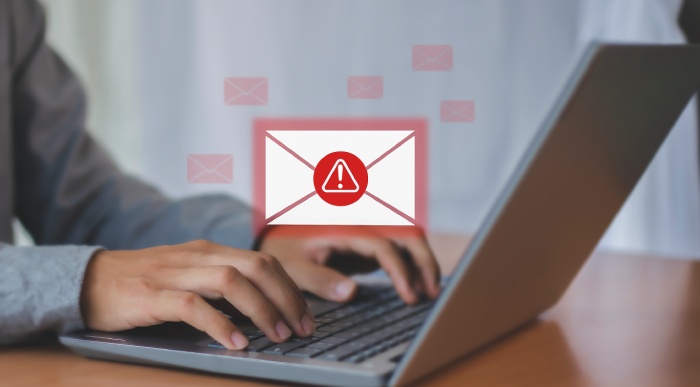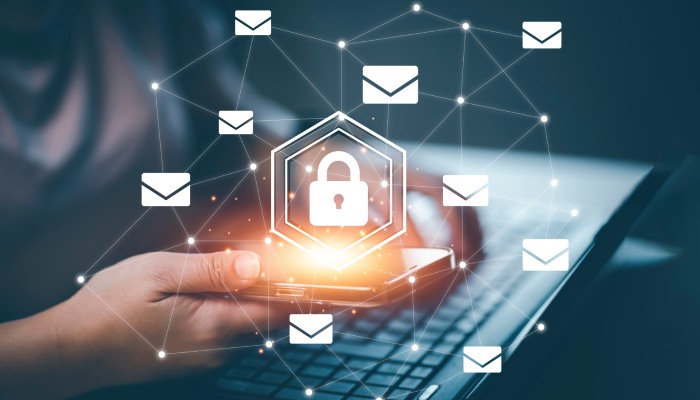10 Email Spoofing Detection Tools That Dramatically Improve Brand Protection
Email spoofing has become one of the most persistent threats in today’s digital landscape, allowing cybercriminals to impersonate trusted domains and deceive recipients into revealing sensitive data or executing malicious actions. For brands, such attacks can cause severe financial losses, reputational harm, and erosion of customer trust. As email remains a primary communication channel for businesses, safeguarding it against spoofing attempts is no longer optional—it’s a critical necessity.
To counter these risks, organizations are increasingly turning to advanced email spoofing detection tools designed to identify, block, and analyze suspicious messages before they reach users. These tools use powerful technologies such as DMARC, SPF, DKIM, and AI-driven threat intelligence to authenticate senders, monitor domain activity, and detect anomalies in real time. In this article, we’ll explore 10 powerful email spoofing detection tools that can dramatically strengthen your brand’s protection and ensure your communications remain secure and trustworthy.
Understanding Email Spoofing: Risks and Impact on Brands
Email spoofing poses a major threat to organizational cybersecurity, as attackers forge email headers to make messages appear from legitimate sources, deceiving recipients and enabling phishing scams, fraud, and business email compromise (BEC) attacks. These spoofed emails can trick users into sharing sensitive data, clicking malicious links, or downloading malware, leading to credential theft and network breaches.
Beyond financial loss, such attacks erode customer trust and damage brand reputation, especially when targeting known domains like PayPal or enterprise platforms such as Google Workspace and Office 365. To combat this, regulatory frameworks like HIPAA and PCI-DSS stress implementing strong email authentication and security policies, urging security teams and executives to prioritize spoofing prevention and detection to stay compliant and safeguard against advanced cyber threats.
Key Features to Look for in Email Spoofing Detection Tools
Choosing an effective email spoofing tool requires a discerning evaluation of several crucial features that collectively reinforce an organization’s cybersecurity posture.
Robust Email Authentication Protocols
A cornerstone of email spoofing detection is enforcement of domain authentication standards including DMARC (Domain-based Message Authentication, Reporting & Conformance), SPF (Sender Policy Framework), and DKIM (DomainKeys Identified Mail). These protocols verify the legitimacy of email headers and message origins, enabling accurate email header analysis to filter out spoofed domains and rogue senders.

Advanced Email Filtering and Email Header Analysis
Effective email security solutions incorporate dynamic email filtering that scans inbound email traffic for suspicious emails, utilizing email message classification techniques. By analyzing both headers and body content, these tools detect patterns indicative of malicious emails, phishing attacks, lookalike domains, and email spam, thereby reducing exposure to email scams and email malware.
AI and Machine Learning Capabilities
Modern email spoofing detection tools leverage AI email security and machine learning to adaptively recognize novel phishing scams and email spoofing methods. Machine learning models enable automated email fraud detection by identifying subtle anomalies in email metadata and user behavior, surpassing static spam filters and traditional rule-based systems.
Threat Intelligence and Incident Reporting
Integration with comprehensive threat intelligence platforms allows real-time updates on evolving cyber threats, enhancing cyber threat protection. Tools offering detailed incident reporting and domain authentication feedback help security teams refine email security policies and enhance security awareness training, crucial for preempting social engineering and email phishing detection.
Compliance Support and User-Friendly Management
Solutions that facilitate easy integration with enterprise email relays and comply with standards such as HIPAA and PCI-DSS provide added value by aligning cybersecurity with regulatory obligations. User-friendly dashboards empower security operations teams and executive leadership to monitor email fraud attempts transparently.
Tool 1: DMARC Analyzer – Comprehensive Domain Protection
DMARC Analyzer is a leading email spoofing detection tool designed to provide complete visibility and control over email authentication protocols. With a focus on simplifying DMARC implementation, the platform automates SPF and DKIM alignment checks, ensuring consistent enforcement of email authentication policies.
Leveraging powerful email header analysis, DMARC Analyzer helps organizations identify spoofed emails and monitor email spoofing scams that target their domains. It provides intuitive reports that detail any instances of email message spoofing, enabling rapid mitigation of phishing and email fraud attacks. Security operations teams benefit from its continual monitoring capabilities and automated alerts, enhancing overall email security and aiding compliance with NCSC recommendations.

Tool 2: Proofpoint Email Fraud Defense – Advanced Threat Intelligence
Proofpoint Email Fraud Defense distinguishes itself by combining email spoofing prevention with advanced threat intelligence and AI-driven analysis. It detects sophisticated phishing scams and business email compromise attempts by scrutinizing email headers and evaluating sender reputation in real time. This tool integrates broadly across platforms like Office 365 and Google Workspace, delivering robust cybersecurity enhancements.
Proofpoint’s solution incorporates both inbound shield technology and email sandboxing to intercept email malware and advanced phishing sites effectively. The platform’s AI and machine learning algorithms continuously learn from newly observed threats, offering proactive email phishing detection. Proofpoint provides comprehensive email spoofing detection reports, facilitating swift identification of suspicious emails launched through email domain spoofing or spoofed domains.
Tool 3: Valimail Defend – Automated Authentication and Enforcement
Valimail Defend automates domain authentication processes, dramatically simplifying DMARC deployment and policy enforcement. Its cloud-native design integrates seamlessly with enterprise email infrastructure, automating SPF and DKIM record management and eliminating manual errors that often undermine email security.
By providing precise email verification and email fraud detection, Valimail Defend ensures only authorized senders can deliver emails on behalf of the organization. The platform’s AI-powered engine analyzes email headers to detect email spoofing methods and suspicious emails, aiding in rapid mitigation. Continuous telemetry supports executive teams and security operations by delivering actionable data to counteract cyber attacks and credential theft attempts.
Tool 4: Agari Phishing Defense – AI-Powered Email Security
Agari Phishing Defense employs AI email security tools combined with behavioral analytics to combat the most sophisticated email spoofing scams and phishing attacks. It focuses on protecting inbound email channels from fraudulent emails and phishing scams aimed at harvesting credentials or deploying email malware.
With an emphasis on email spoofing prevention, Agari’s platform performs granular email header analysis, monitoring corrective actions against spoof email senders and spoofed domains. Its machine learning models adapt to emerging phishing techniques such as lookalike domains and social engineering tactics. This AI-driven approach enables rapid classification of email threats, improving spam filters, and enhancing email communication security across diverse email relays.
Agari also collaborates with security teams to develop customized security awareness training, ensuring users can identify and report email threats effectively. This holistic approach supports compliance with stringent requirements like HIPAA and PCI-DSS while defending against email fraud and cyber threat protection challenges.
Incorporating these advanced detection tools forms a critical line of defense against the escalating sophistication of email spoofing attacks. By embracing comprehensive email authentication, AI-enhanced email filtering, and active threat intelligence, brands can significantly bolster their resilience against phishing scams, fraudulent emails, and business email compromise.

Entities such as Trustifi and Inbound Shield also complement these efforts by providing specialized email security software tailored to specific industry needs. Ultimately, a layered, proactive email security strategy remains essential in safeguarding brand integrity and maintaining customer trust in an evolving cyber threat landscape.
Tool 5: Barracuda Sentinel – Real-Time Threat Detection
Barracuda Sentinel leverages AI and machine learning to provide cutting-edge email security for organizations fighting sophisticated phishing scams and spoofing attacks. This email spoofing tool operates with real-time threat detection mechanisms that analyze email headers, sender reputation, and message content to detect malicious emails and fraudulent emails impersonating trusted domains. By integrating with existing email systems like Office 365 and Google Workspace, Barracuda Sentinel enhances email spoofing detection and prevention without disrupting normal business email communication security.
One of the key features of Barracuda Sentinel is its ability to identify spear-phishing and business email compromise (BEC) attempts by closely monitoring unusual email sending patterns and inbound shield anomalies. With continuous analysis of email headers and email message spoofing attributes, it can swiftly flag spoofed domains or rogue senders attempting to exploit domain authentication weaknesses such as improperly configured DMARC, SPF, or DKIM records. Organizations benefit from automated protection that drastically reduces the risk posed by advanced phishing sites and other email threats linked to cyber attacks.
Tool 6: Microsoft Defender for Office 365 – Integrated Spoofing Protection
Microsoft Defender for Office 365 provides an integrated suite of email security solutions designed to combat phishing attacks and email spoofing. As a native security protocol within Office 365, this platform enforces rigorous email authentication practices including DMARC, SPF, and DKIM, thereby strengthening domain authentication against email spoofing methods. It utilizes AI-powered email phishing detection and email header analysis to classify suspicious emails, improving email fraud detection rates.
Defender for Office 365 also employs advanced threat intelligence feeds and email sandboxing to counteract sophisticated email malware and business email compromise incidents. These capabilities allow security operations teams to quickly isolate spoofed emails and protect users from credential theft and social engineering campaigns. Additionally, its integration with Microsoft’s broader cybersecurity frameworks helps maintain compliance with standards such as HIPAA and PCI-DSS, critical for protecting sensitive data transmitted through email relay systems.
Tool 7: Cisco Email Security – Robust Spoofing Prevention Measures
Cisco Email Security Gateway offers a comprehensive defense against email spoofing with a robust suite of security protocols built for enterprise-level email communication security. It enhances email filtering efficacy by deploying DMARC, SPF, and DKIM validation processes, which helps thwart email spoofing scams and malicious emails sent from spoofed domains. The solution’s real-time threat analysis combined with an extensive reputation database detects and blocks spoof email sender attempts while mitigating email message spoofing risks.
Cisco’s tool incorporates AI and machine-learning models to identify patterns typical of phishing scams and email malware, thus improving phishing and email fraud detection rates. Their platform supports inbound shield functionalities and spam filters that reduce the volume of email spam and suspicious emails reaching user inboxes. With a particular focus on preventing rogue sender or email hijacking attacks, Cisco Email Security fits seamlessly into broader network security strategies and compliance mandates promoted by organizations like the NCSC.

Tool 8: Mimecast Email Security – Multi-Layered Brand Protection
Mimecast’s email security solution offers an integrated system of multi-layered protections specifically aimed at maintaining brand integrity and preventing email spoofing attacks. It provides rigorous email authentication enforcement using DMARC, SPF, and DKIM protocols combined with threat intelligence and email spoofing detection technologies. Mimecast’s email filtering capabilities stem from its ability to conduct detailed email header analysis complemented by threat reputation scoring to spot fraudulent emails quickly.
The platform is designed to combat advanced persistent threats and sophisticated social engineering tactics, frequently employed in email phishing scams. Additionally, Mimecast’s support for security awareness training aids organizations in educating their employees on recognizing and reporting email fraud attempts. Its comprehensive email message classification techniques help prevent email spoofing scams by blocking messages from lookalike domains or suspicious senders, ultimately strengthening an enterprise’s cyber threat protection.
Tool 9: Vade Secure – Predictive Email Defense Technology
Vade Secure utilizes predictive AI to provide proactive email spoofing protection that anticipates phishing and malware threats before they reach end users. This email spoofing tool incorporates machine learning to analyze historical email behavior and model email communication security patterns, enhancing the speed and accuracy of email spoofing detection. Vade Secure examines email headers, verifies domain authentication records such as DMARC, SPF, and DKIM, and uses email sandboxing to identify advanced phishing sites and malicious emails.
Its predictive email defense technology is particularly effective against emerging email spoofing scams and zero-day email threats, making it a valuable asset for organizations concerned about email fraud and business email compromise. Vade Secure also integrates with popular platforms like Google Workspace and Office 365, simplifying deployment while offering robust email threat intelligence and filtering to reduce cybersecurity risks linked to email message spoofing and rogue senders.
Tool 10: OnDMARC – User-Friendly Domain Authentication Management
OnDMARC provides a streamlined approach to email authentication management focused on making DMARC, SPF, and DKIM implementation accessible to organizations of all sizes. This email spoofing tool emphasizes ease of use and actionable insights for enhancing email spoofing prevention through domain authentication. OnDMARC’s dashboard offers comprehensive metrics on email message spoofing attempts detected via detailed email header analysis, including identification of spoofed domains and spoof email senders.
By simplifying records configuration and offering automated suggestions, OnDMARC reduces human error, a common vulnerability exploited in email spoofing attacks. The platform also supports continuous monitoring and reporting, enabling executive teams and security operations teams to maintain proactive oversight over email security policy enforcement. OnDMARC’s user-friendly design accelerates deployment of email spoofing detection systems essential for mitigating phishing attacks, email scams, and fraudulent emails effectively.

Best Practices for Implementing Email Spoofing Detection to Enhance Brand Security
Implementing a robust email spoofing detection strategy is vital for protecting brand reputation and fostering trust in email communications. Successful deployment hinges on several best practices aligned with advanced email security solutions:
Enforce Strong Email Authentication Standards
The cornerstone of email spoofing prevention is the proper implementation of DMARC, SPF, and DKIM protocols. Organizations should ensure these protocols are correctly configured and regularly audited to confirm domain authentication integrity. Using tools like OnDMARC or Barracuda Sentinel helps streamline this process and provides continuous feedback on compliance status.
Utilize Multi-Layered Email Filtering and Threat Intelligence
Deploying email security solutions that combine AI email security, machine learning, and real-time threat intelligence presents a comprehensive defense posture. Multi-layered filtering—including spam filters, email header analysis, and email sandboxing—can effectively detect and quarantine malicious emails and fraudulent emails before they reach inboxes. Solutions like Mimecast and Cisco Email Security exemplify this approach.
Regular Security Awareness Training
Human error remains a significant factor in successful spoofing attacks and phishing scams. Conducting regular security awareness training for staff empowers users to recognize suspicious emails, including phishing scams and email spoofing tactics such as email domain spoofing or lookalike domains. Training should include guidance on identifying email attachments and suspicious email elements, supporting overall email phishing detection efforts.
Monitor Email Traffic and Analyze Email Headers
Continuous monitoring of email headers and metadata can uncover subtle indicators of email spoofing methods and email fraud. Security teams should use email message classification tools to detect irregular patterns, unauthorized email relays, or rogue senders attempting credential theft or email hijacking. Automation and AI can enhance these monitoring capabilities by analyzing volumes of email data efficiently.
Integrate Email Security with Broader Cybersecurity Frameworks
Email spoofing detection should not exist in isolation but be part of an overarching network security strategy. Establishing policies aligned with regulatory standards such as HIPAA or PCI-DSS and integrating email security tools with other cybersecurity measures (like intrusion detection systems) improves resilience against cyber attacks and advanced persistent threats.
Engage with Reliable Email Security Vendors
Selecting reliable vendors such as Trustifi, Inbound Shield, or Vade Secure, who offer advanced threat detection and continuous support, enhances the effectiveness of email security programs. Collaboration with these providers ensures organizations have access to the latest AI-driven detection technologies and threat intelligence, crucial for staying ahead of evolving email threats.

FAQs
What is email spoofing, and why is it dangerous?
Email spoofing is a cyber attack technique where attackers forge the sender address to impersonate a trusted entity. It is dangerous because it facilitates phishing scams, business email compromise, and the spread of malicious emails, leading to financial loss, data breaches, and reputational damage.
How do DMARC, SPF, and DKIM help prevent spoofing attacks?
DMARC, SPF, and DKIM are email authentication protocols that verify the legitimacy of the sender’s domain and message integrity. They help prevent spoofing attacks by ensuring only authorized servers can send emails on behalf of a domain, reducing the chance of email message spoofing and fraudulent emails.
Can AI and machine learning improve email spoofing detection?
Yes, AI and machine learning enhance email spoofing detection by analyzing vast amounts of email data, recognizing phishing behaviors, and adapting to new spoofing methods in real-time. This helps in identifying sophisticated phishing attacks and minimizing false positives in email filtering.
What role does email header analysis play in spoofing detection?
Email header analysis provides critical information about the path and origin of an email, exposing anomalies like discrepancies in the sending IP or unauthorized email relays. This analysis is essential for detecting spoof email sender attempts and identifying spoofed domains.
How can businesses ensure compliance while implementing email security protocols?
Businesses can ensure compliance by aligning email security strategies with regulations such as HIPAA and PCI-DSS, implementing strong email authentication (DMARC, SPF, DKIM), and maintaining detailed logs and monitoring. Using integrated solutions like Microsoft Defender for Office 365 helps automate this process and support regulatory requirements.
Key Takeaways
- Implementing DMARC, SPF, and DKIM protocols is essential for robust email spoofing prevention and domain authentication integrity.
- Advanced email security tools leveraging AI, machine learning, and real-time threat intelligence significantly improve detection and mitigation of phishing and spoofing attacks.
- Multi-layered email filtering combined with ongoing email header analysis provides deeper insight into suspicious emails and effectively blocks fraudulent emails.
- Security awareness training for staff is a critical component of mitigating the human factor in email spoofing attacks and phishing scams.
- Integrating email spoofing detection with broader cybersecurity policies and compliant frameworks enhances overall network security and brand protection.







